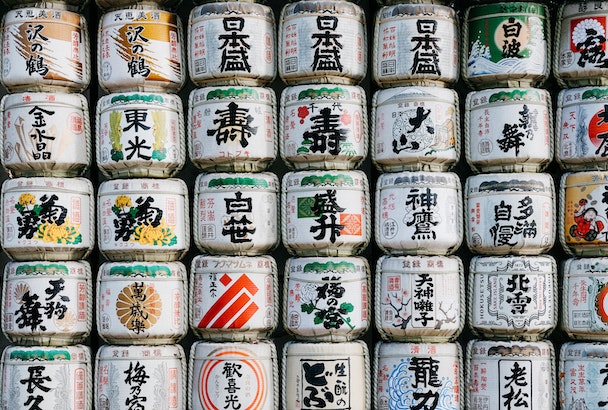Outside the box thinking: assessing packaging innovation
When it comes to discussions on packaging, most industry debates usually revolve around plastic. Natural, as it will be taxed for the first time next year, and of course environmental issues around its excessive use are weighing heavily on the public consciousness.

Cult on how the future of packaging will be connected, sentient and streamlined
However, product packaging is also vital brand real estate, and can easily be overlooked by marketers as a canvas that can be used to engage. But that space will become ever more valuable, especially when it comes to connecting the dots between digital spaces and real life – and putting the brand right into the hand.
Brands are – or should be – innovating in two key ways when it comes to reviewing product packaging potential. The first, and long overdue if not already in progress, is taking steps to account for environmental impact. Stripping back or doing away with packaging altogether, like the refillable toiletries from Faith in Nature, cuts down material use, waste and shipping emissions. Blue-sky innovations, such as the Dissolving Bottle, an opensource solution that creates dissolvable shampoo bottles, show just how creatively brands can think about reducing their environmental impact through packaging choices.
If a brand is wary of reducing packaging space due to necessary instructions, ingredients and brand information, then take it all out and make it accessible via a smart code, such as a QR code. This will provide all the room needed by taking it online, and can easily be linked to other brand content at the same time to make it a less functional experience.
The second is innovating packaging for elevated customer experience (CX) purposes: making the most of digital shopping experiences by creating connected designs that unlock virtual experiences and provide added value to consumers. These can drive consumers to product demos, virtual consultations, AR try-on and even immersive brand worlds.
AdWeek’s Morning Consult survey found that over 50% of consumers are converting to purchase over social channels, so connecting packaging to digital strategy is not far off becoming a business imperative. With TikTok becoming a go-to destination for beauty shoppers in particular, TikCodes are, as yet, a relatively untapped packaging opportunity for marketers.
The connected packaging market is set to be worth an estimated $20bn by 2025, and packaging experts are predicting that there will be no such thing as ‘unconnected’ packaging by then (Experience Is Everything, Connected Packaging Report). But beyond direction of travel, there are already tangible sales benefits from reconsidering the humble product box. Shopify research showed that interactions with products having 3D/AR content showed a 94% higher conversion rate than for products without AR/3D.
Coming back to sustainability issues, consumer demand is starting to link up with action. We recently conducted research with the Diversity Standards Collective that focused on conscious consumption, canvassing the views of consumer groups that had been largely neglected. Brands have often operated with an assumed (and inaccurate) definition of the ‘conscious consumer’.
Asked which brand behaviors around conscious consumption appealed most, the focus group identified ‘product and packaging modifications’ as the most important by far – ahead of charitable donations, public pledges and brand-led initiatives. It was clear that where the other actions allowed room for equivocation and delay, when brands altered their product and packaging, it signaled that they were absolutely ‘walking the walk’, sacrificing profit to operate more responsibly. It looks likely that this sentiment has intensified through the pandemic-driven boom in e-commerce, and the packaging waste that has gone along with it.
This will start to influence the retail environment too. Research from IBM and the National Retail Federation (2020) reported that 44% of consumers do not trust sustainability claims made by organizations. Of the consumers surveyed by IBM, 73% of participants said they would pay a premium if brands could show a sustainable sourcing and supply chain. Giving consumers access to this information via smart codes on packaging allows a greater degree of transparency and information sharing that is not limited by pack size.
Front-runner brands are already streets ahead here. CBD wellness brand Tonic embeds NFC tags into its packaging to enable people to access digital content that shares storytelling content on the brand’s provenance, as well as practical product information. In 2020, Levi’s and Ganni launched a rentable eco-fashion partnership that featured a smart code to unlock style tips, product information, behind-the-scenes insights into the collection and brand storytelling. This tied in with a sustainability message around ‘loan not own’ and played perfectly into the circular economy ethos of the collection.
The brands who are leading in this space are recognizing the value of connected packaging as a key brand touchpoint that should be fully integrated into their omnichannel strategy. Purchase – and the packaging that comes with it – isn’t the end of the consumer journey. It is the starting point for greater brand immersion. NYX Professional Makeup made the industry-first move of launching its 2021 collection with a cross-platform experience that could be accessed via Triller, Snapchat and a SnapCode on its Marshmellow Soothing Primer. This gave access to an exclusive Bebe Rexha virtual concert, as well as AR try-on, a virtual store and arcade-style digital games.
The future of packaging will be connected, sentient and streamlined. Rightly, there will be less of it, but what there will be will offer elevated and intelligent experiences that can unlock brand storytelling, shoppertainment and transparency.
Charlotte Bunyan, chief strategy officer at Cult.
Content by The Drum Network member:

CULT
Cult's ideas and insight take some of the world’s biggest beauty, fashion, luxury and wellness brands beyond their comfort zone to drive tangible business value. Founded in London in 2012 by Bridey Lipscombe and Cat Turner, we launched a New York studio in 2018, a global production house in 2019, and now have over 40 staff and an annual turnover of $8m.
Find out more